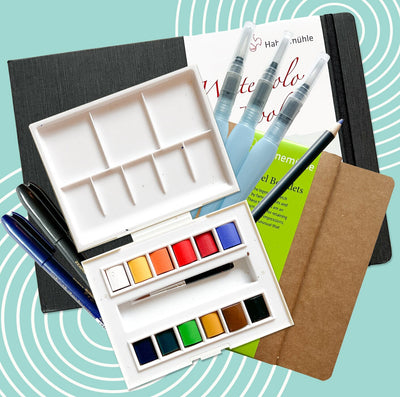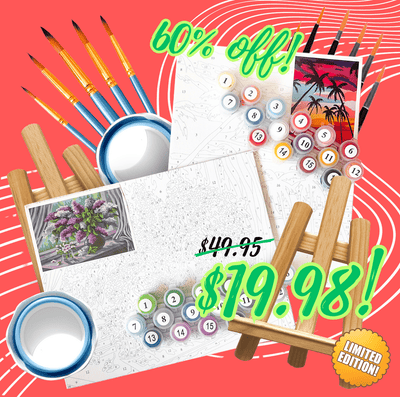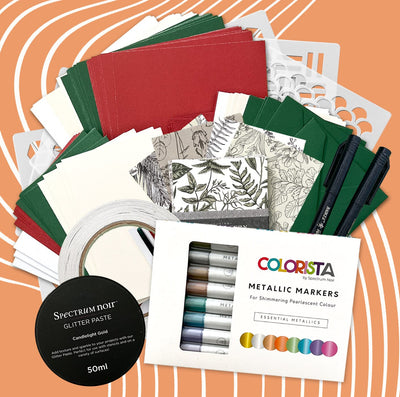Read our last Post! Part One
If you received your June Smart Art Box, you are well on your way to mastering the art of the fresco!
Read our last post to discover what a fresco actually is, and to learn about its history in Ancient Egypt, Greece and Rome!
Now to continue where we left off…Frescoes in the Ajanta Caves, India. Photo: Visual Hunt
Let’s journey to ancient India to see what fresco masterpieces we can find…
If you are lucky enough to find yourself in the beautiful Aurangabad district of Maharashtra, India, you must visit the Ajanta Caves! There you’ll find rock cave temples that contain rare and stunning examples of ancient Indian art made between 200 BCE and 650 CE. That includes some of the earliest fresco examples that we know today! In particular, they depict Jakata tales and stories from the life of Buddha.
Eastern Orthodox Ceiling. Photo: Visual Hunt
The art of the fresco continued into the Medieval period, in Europe and the Near East!
Europe in the Medieval period covers many years, places and cultures. So it’s no wonder that the art produced during this time was rich and varied. One finds some of the world’s most impressive frescoes made in this period too.
If you read our last post, you’ll know that the Ancient Greeks were masters of fresco painting. Well, their (non-pagan) Byzantine successors were also keen practitioners of fresco art. If you want to see it with your own eyes, travel to any one of the richly ornamented and incredible Eastern Orthodox cathedrals that are found in Greece, Russia and other areas in Europe and the Near East.
Panagia Parigoritissa frescoes, 13th century. Photo: Visual Hunt
Journeying slightly westward will bring you face to face with some of the Gothic Christian masterpieces located in Italy and Spain, by artists including Giotto and Simone Martini. Remember that the dryer Mediterranean climates made these places ideal for the fresco technique (as opposed to Northern Europe and Britain, where artists favored tapestries and embroidered textile masterpieces).
The Alta Ribagorça of Santa Maria de Tahüll, c. 1120, conserved in the Museu Nacional d’Art de Cataluyna in Barcelona. Photo: Visual Hunt
But the period to end all periods of fresco production is the Renaissance in Italy!
Who would argue against the wealth in artwork that is to be mined from the fourteenth and fifteenth centuries, known as the Renaissance period, in Italy? And the fresco played a central role in all that. Characterized by a fascination with the arts and humanities of the ancient Greeks and Romans, much of the artwork of this period was still to be found in cathedrals and other religious settings. And this was certainly the case with the frescoes produced during this time.
Most famous are perhaps the glorious examples in the Vatican’s Sistine Chapel, made by the likes of Botticelli, Michelangelo, and Perugino. And what about Masaccio’s frescoes in the Brancacci Chapel frescoes (1424-28), including Tribute Money and the Expulsion from the Garden of Eden?
Christ and Angels by Andrea del Castagno, c. 1447, Santa Apollonia, Florence. Photo: Visual Hunt
The art of fresco production was still going strong as the sixteenth century and Age of Baroque art ushered in. The proof of that can be seen in Raphael’s world-renowned frescos in the Vatican, including the School of Athens (1508-11), and Annibale Carracci’s frescoes in the Farnese Gallery.
Diego Rivera frescoes, Detroit Institute of Arts. Photo: Visual Hunt
Frescoes fell out of favor for a few centuries only to come back strong in the Mexican Mural Renaissance!
Is it a coincidence that a more recent period known for its fresco production was also known as a renaissance? We’ll let you be the judge by perusing the vibrant and colorful works made by Mexican artists including Diego Rivera, Jose Clemente Orozco, David Alfaro Siqueiros, and others such as Ben Shahn, in the 1920s and 1930s…
Frescoes may not be as prevalent as they were back in the Renaissance, but a few talented artists still practice this technique today!
Although some will say that the glory days of the fresco are in the past, others are trying bring them back. This includes L.A.-based artist iLia Anossov. In addition to incorporating the medium into his own artistic practice, he founded the Nationwide Fresco Painting Workshop and the Fresco School, giving hundreds of students the opportunity to enroll in a curriculum that teaches the art of fresco.
And who knows, after your June Art Box experiments, you too may want to enroll?!


